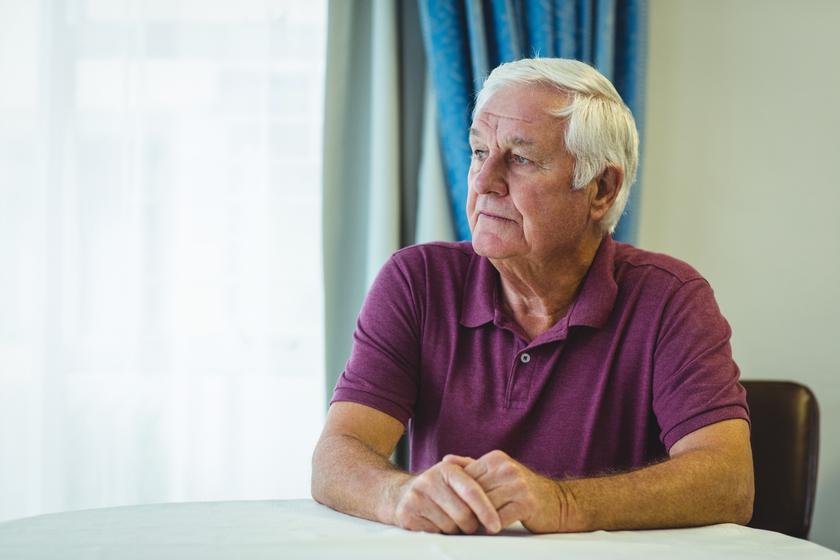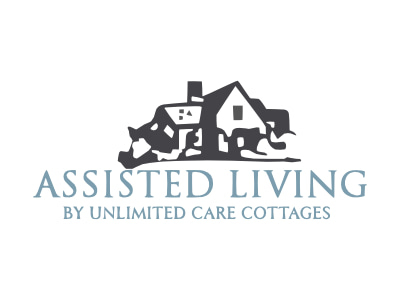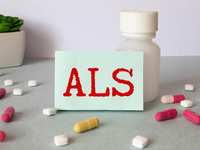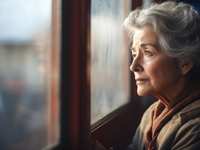Navigating Seasonal Aliments In Elderly Loved Ones

Ever watched the first snowflake of winter kiss the ground and felt a mix of wonder and worry? If you’ve cared for an aging loved one, you know that chill in the air can signal more than just holiday cheer—it’s also time for navigating seasonal ailments in elderly loved ones. Imagine this: It’s a crisp day where every breath hangs visibly in the air. Your older adult is bundled up, yet there’s a vulnerability to them not seen in summer.
You might ask yourself, why does winter weather seem to write its own challenging script for seniors? We’ll unravel this together; from dimming daylight affecting mood to navigating holidays with grace. By reading on, you’ll discover how light therapy can brighten days or how tweaking family traditions can lift spirits.
The best part? You’re about to become their champion against cold season blues without missing a beat—let’s dive right into it!
UNDERSTANDING SEASONAL AFFECTIVE DISORDER IN THE ELDERLY
Imagine winter’s chill setting in, days getting shorter, and your usually upbeat grandpa starts feeling blue. It’s not just the holidays bringing gloom; it could be Seasonal Affective Disorder (SAD), a form of depression that cycles with the seasons.
WHAT IS SEASONAL AFFECTIVE DISORDER?
SAD isn’t just a case of ‘winter blues.’ It’s like having a guest who overstays their welcome every year when daylight becomes scarce. Think about how older adults often thrive on routine – well, SAD throws them for quite the loop. Blue Moon Senior Counseling defines it as recurring episodes of depression during certain times of the year, particularly winter.
This disorder can really take its toll on seniors’ mental health because let’s face it: nobody signed up to have their mood hijacked by Mother Nature. Unlike other forms of depression which may have no seasonal pattern or specific cause, SAD is directly related to changes in seasons where reduced sunlight disrupts our circadian rhythm—the body’s internal clock.
RECOGNIZING SIGNS OF SAD IN SENIORS
We all know those tell-tale signs when something’s off with our elderly loved ones—maybe they’re less chatty at family gatherings or suddenly prefer canned soup over grandma’s secret-recipe chicken noodle. But there are more common signs we should watch out for:
- A dip in energy levels that turns Uncle Joe from life-of-the-party to lights-out-by-seven,
- Mood swings sharper than Aunt Millie’s tongue at last year’s holiday dinner,
- Sleep patterns are as unpredictable as winning numbers on lotto night.
In fact, a staggering nearly eight million adults aged 65 years or older experience depression annually. And here’s another shocker: younger folks aren’t alone riding this rollercoaster since both age groups get hit by SAD equally hard.
If you notice mom starting her day winter-worn despite twelve hours under her floral quilt or dad experiencing difficulty concentrating like he has grease instead of brain juice—it could signal they’re among many people affected by this form-seasonal affective disorder known amongst medical circles simply “S-A-D.” Yes clever right? So if these symptoms persist beyond post-holiday exhaustion don’t shrug them off help your aging loved one seek advice from their primary care physician sooner rather than later.
That’s why it’s so important to have a good grip on the strategies that can help those in assisted living. Being aware of how to cope with these issues can guarantee those in assisted living get the help they need for an improved standard of existence.
IMPACT OF SOCIAL ISOLATION ON ELDERLY MENTAL HEALTH DURING WINTER
Social interaction is the spice of life, especially for older adults who often face long, cold winters. Imagine spending time with a cup of hot cocoa and your favorite book—it’s comforting, but without someone to share it with, even this cozy scene can lose its warmth. That’s why combating seasonal ailments in elderly loved ones isn’t just about keeping them physically healthy; it’s equally important to foster their mental health.
THE LINK BETWEEN LONELINESS AND SEASONAL DEPRESSION
When winter rolls in and temperatures drop, many seniors find themselves more isolated than ever. It’s not just about being alone—feeling lonely can lead directly to depressive symptoms that hit harder during these colder months. Think about how one feels after days without meaningful conversation or laughter—the silence can be deafening.
A stark reality shows that one in four older adults feel isolated, while another third are starved for regular companionship. These aren’t just sad stats—they paint a picture where loneliness may indeed play the villainous role in worsening cases of seasonal depression among our aging loved ones.
We’re social creatures by nature; interactions are as essential as vitamins for our well-being. But when icy roads and chilly winds keep family members away from holiday gatherings or prevent daily routines like brisk walks around Unlimited Care Cottages’ beautiful grounds—a senior’s world shrinks alarmingly fast.
COLD WEATHER DOESN’T HAVE TO MEAN COLD HEARTS
Frigid weather doesn’t have to signal an inevitable slide into sadness for those we hold dear. Instead, let us use creativity and thoughtfulness to break through barriers erected by winter weather. Crafting smaller gatherings within assisted living communities such as Unlimited Care Cottages could spark joy amidst dreariness—and every shared smile is a victory against isolation-induced affective disorders.
Battling back against the tide requires vigilance though: Recognize signs like disrupted sleep patterns or sudden weight gain (or loss) which might indicate an underlying struggle with SAD—a type of depression that some people experience specifically during shorter daylight hours associated with day winter brings along.
BRINGING LIGHT INTO DARKNESS WITH INTENTIONALITY
Mental health professionals sometimes recommend light therapy boxes because they emit what mimics natural sunlight—an effective combatant against SAD—but you don’t need fancy gadgets to bring brightness into lives dimmed by isolation. Encouraging seniors at facilities like Unlimited Care Cottages to spend time near windows where sunlight pours in works wonders. Simply sitting by a window can help lift spirits, improve sleep patterns, and increase vitamin D levels—all vital for overall well-being.
STRATEGIES FOR MANAGING SEASONAL DEPRESSION IN ASSISTED LIVING FACILITIES
LIGHT THERAPY AS A TREATMENT OPTION
Illuminating the day could be as straightforward as flipping a switch. For seniors grappling with the winter blues, that light switch might just be connected to a light therapy box. When natural sunlight is scarce, this nifty device steps in to mimic those much-needed rays.
A blast of light from a light therapy box can work wonders for older adults feeling down during shorter winter days. It’s not just about keeping rooms well-lit; it’s science at its best – helping reset circadian rhythms and giving energy levels a boost when dreary weather wants to do otherwise.
If you’ve ever felt your mood lift on sunny days, then you get why these boxes are like portable sunbeams – minus any harmful UV rays. Using them consistently each morning can help our aging loved ones start their day with an indoor sunrise, even if it’s gray outside.
PROMOTING PHYSICAL ACTIVITY DESPITE COLD WEATHER
Sure, Jack Frost nipping at your nose isn’t everyone’s cup of tea. But don’t let cold weather freeze out regular physical activity — crucial for mental health all year round but especially vital when battling seasonal affective disorder (SAD).
We’re talking indoor tai chi classes or hallway bowling leagues right within assisted living facilities because staying active shouldn’t hinge on good weather alone. Let’s face it: taking grandma for brisk walks might sound charming until you’re both icicles.
Incorporating exercise into daily routines doesn’t have to mean braving frosty temperatures either; there are plenty of ways to keep moving indoors where it’s warm and cozy. Even chair exercises or dance parties could pump up endorphins enough to send SAD packing its bags.
NAVIGATING HOLIDAY CELEBRATIONS WITH ELDERLY LOVED ONES
Holiday celebrations should sparkle brighter than tinsel—not cause stress worse than untangling last year’s lights. Adapting family traditions so they’re inclusive may take some creativity but believe me—it will pay off in spades (or snowflakes.). Think of smaller gatherings instead of overwhelming bashes that leave older people exhausted rather than exhilarated.
Maintaining energy levels while spending time together means finding that sweet spot between festive cheer and restful peace. We need balance—like eggnog needs nutmeg—to ensure holiday festivities are joyful without leaving senior loved ones running low on juice halfway through opening gifts.
Finding new twists on old traditions keeps things fresh anyway—so why not embrace change? Whether swapping out loud parades for quiet nights or trading the usual holiday feast for a creative potluck, these changes can make holidays more personal and less stressful. Let’s start celebrating in ways that truly reflect what matters to us.
NAVIGATING HOLIDAY CELEBRATIONS WITH ELDERLY LOVED ONES
When the winter weather rolls in and holiday lights start twinkling, it’s a signal for family gatherings and time-honored traditions. But for our older loved ones, especially those living in assisted facilities like Unlimited Care Cottages, this festive season can come with unique challenges.
CREATING INCLUSIVE FESTIVITIES
The holiday spirit often comes packed with high energy levels but remember that aging loved ones may not share the same stamina. To keep celebrations merry and bright without draining their energy, consider low-key yet meaningful family traditions that everyone can enjoy. Maybe instead of an all-day marathon of events, you break down the fun into shorter visits or smaller gatherings that are easier to manage.
Social interactions during these times are crucial; they help combat feelings of isolation which tend to creep up more during cold months when social outings become less frequent. Adapt your plans to include cozy indoor activities where seniors can participate comfortably—think board games by the fireplace or sharing stories over hot cocoa.
ADJUSTING ENERGY LEVELS FOR OLDER ADULTS
We know how much zest holiday celebrations require—and how taxing they can be on seniors’ energy levels. So here’s a tip: plan around their best times of day. If Uncle Joe is most alert in the morning, why not have a brunch celebration? And if Aunt Mary’s sleep patterns mean she’s brighter afternoon, let’s make sure we’re sipping eggnog then.
If your senior loved one experiences SAD (Seasonal Affective Disorder), incorporating light therapy might just lift their spirits. You’d be surprised at what good quality lighting from something as simple as a lightbox emits; it could change their whole outlook on winter days when daylight feels scarce.
MAINTAINING HEALTH DURING THE HOLIDAYS
Eating healthy throughout this sugar-laden season is tough enough without having seasonal affective disorder throw your appetite off-kilter—causing weight gain or weight loss depending on who you ask. Help them stay balanced by prepping dishes rich in nutrients and offer support by joining them for regular physical activity—even if it means bundling up for a brisk walk outside.
- Analyzing eating habits helps identify changes like sudden cravings or lack thereof—a common sign someone may experience SAD.
- To ensure our elderly don’t feel left out while others indulge, serve alternatives so everyone has something delicious without compromising dietary needs.
- Seeking medical assistance is essential if you are experiencing mood disturbances, as they may be indicative of an underlying condition requiring attention. Mood swings can be more than just the ups and downs of everyday life; they might signal a condition that needs attention. Confer with your medical practitioner or a mental health expert to receive the right assistance.
FAQS IN RELATION TO NAVIGATING SEASONAL AILMENTS IN ELDERLY LOVED ONES
WHAT IS SEASONAL AFFECTIVE DISORDER IN SENIOR CITIZENS?
SAD hits seniors with depression during specific seasons, often winter, due to less sunlight and disrupted body rhythms.
HOW CAN I MAKE MY HOME SAFE FOR AN ELDERLY PERSON?
Add grab bars, clear walkways, improve lighting, and remove rugs. Safety-proofing prevents slips and falls at home.
WHAT IS IT CALLED WHEN YOU HELP THE ELDERLY AT HOME?
Caring for seniors at their place is known as ‘home care’—it’s tailored to support maintaining their independence safely.
HOW DO YOU HELP AN ELDERLY PERSON WHO LIVES ALONE?
To assist solo elders: check in regularly, set up emergency systems, organize meal deliveries, and encourage social activities.
CONCLUSION
When winter whispers, it can be tough on our seniors. Navigating seasonal ailments in elderly loved ones means understanding their unique struggles during colder months. Remember: light therapy may offer solace from the shorter days, and a healthy diet paired with exercise keeps spirits high.
Care for them calls for an eye on mood changes; knowing when to seek professional guidance is key. Keep traditions alive but adapt them—smaller gatherings can still warm hearts.
Connect often, and combat loneliness fiercely. Let’s embrace indoor activities that spark joy and promote resilience against the solitude of snowfall. Your love and vigilance are the warmth they need this season—and everyone after. If you’re exploring senior care options, consider the exceptional support provided by assisted living in Kingwood.

















